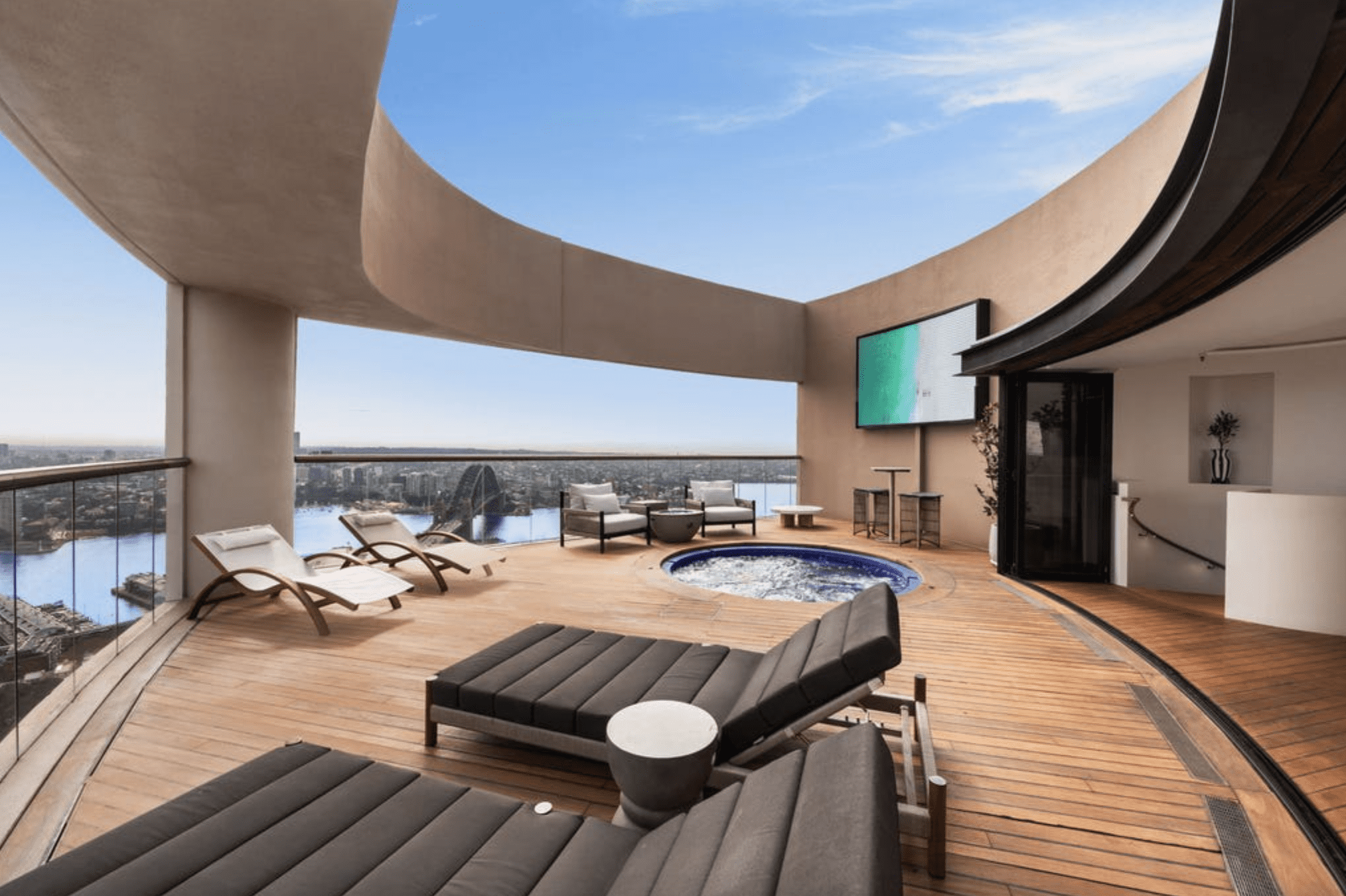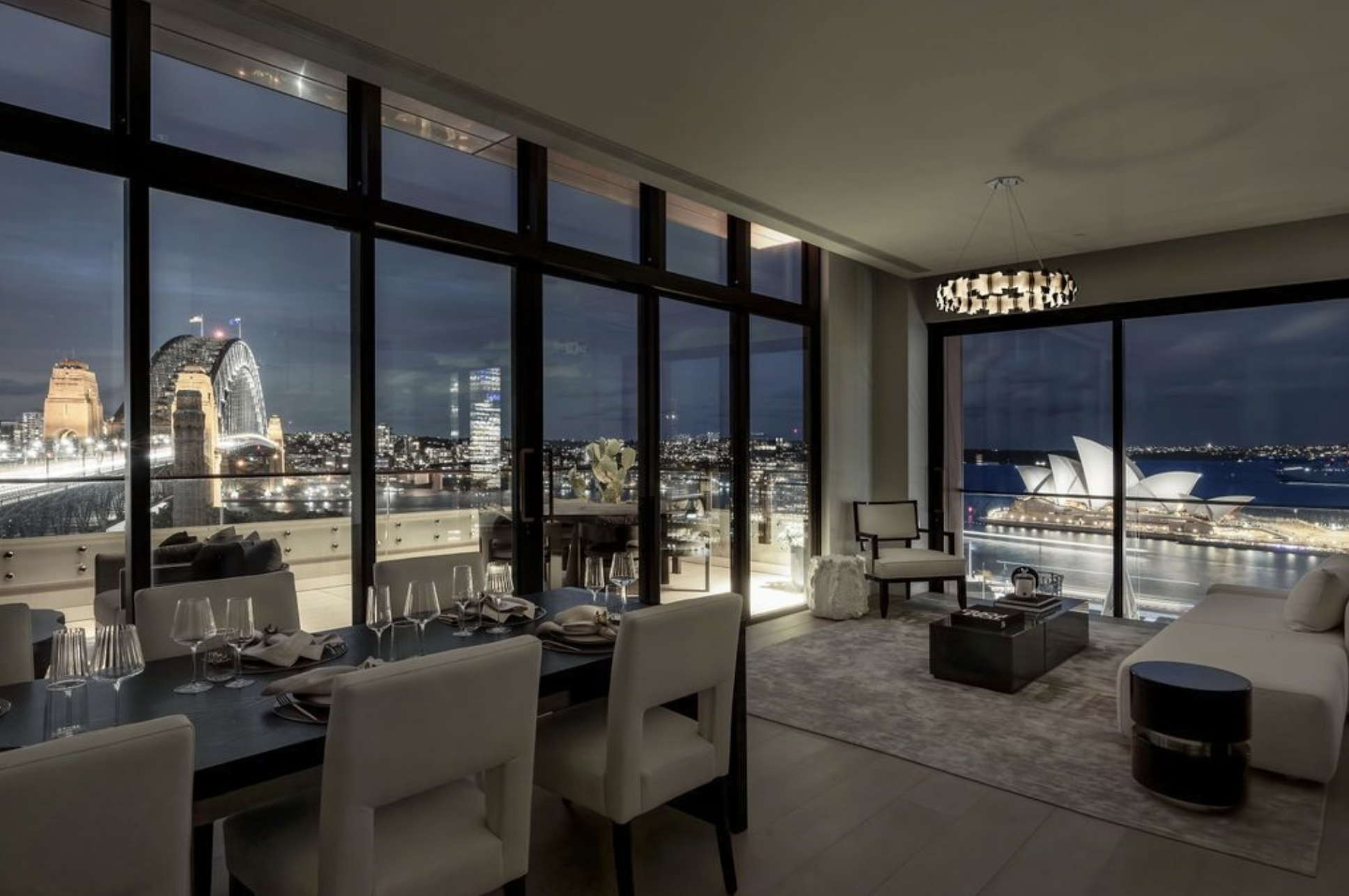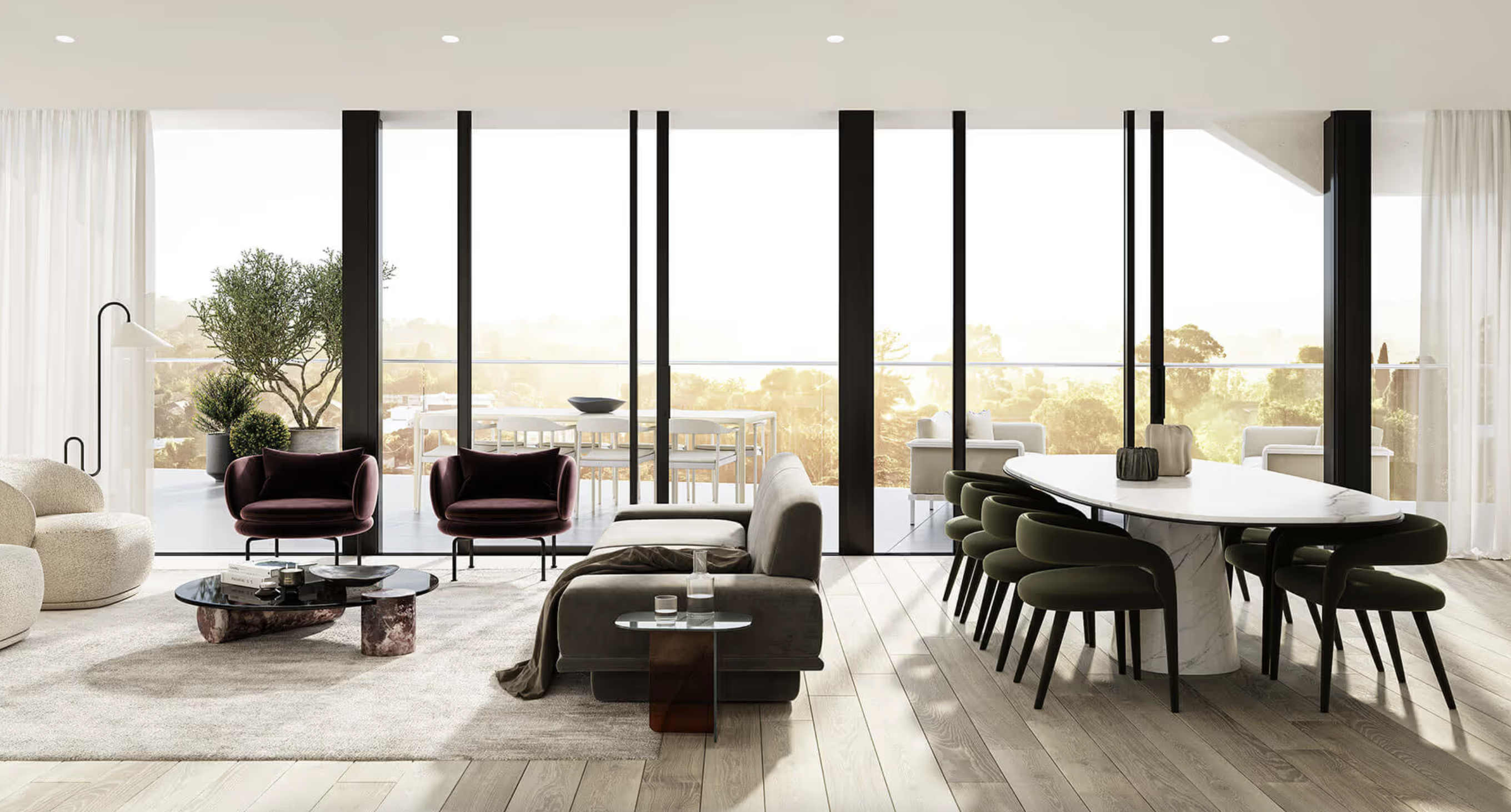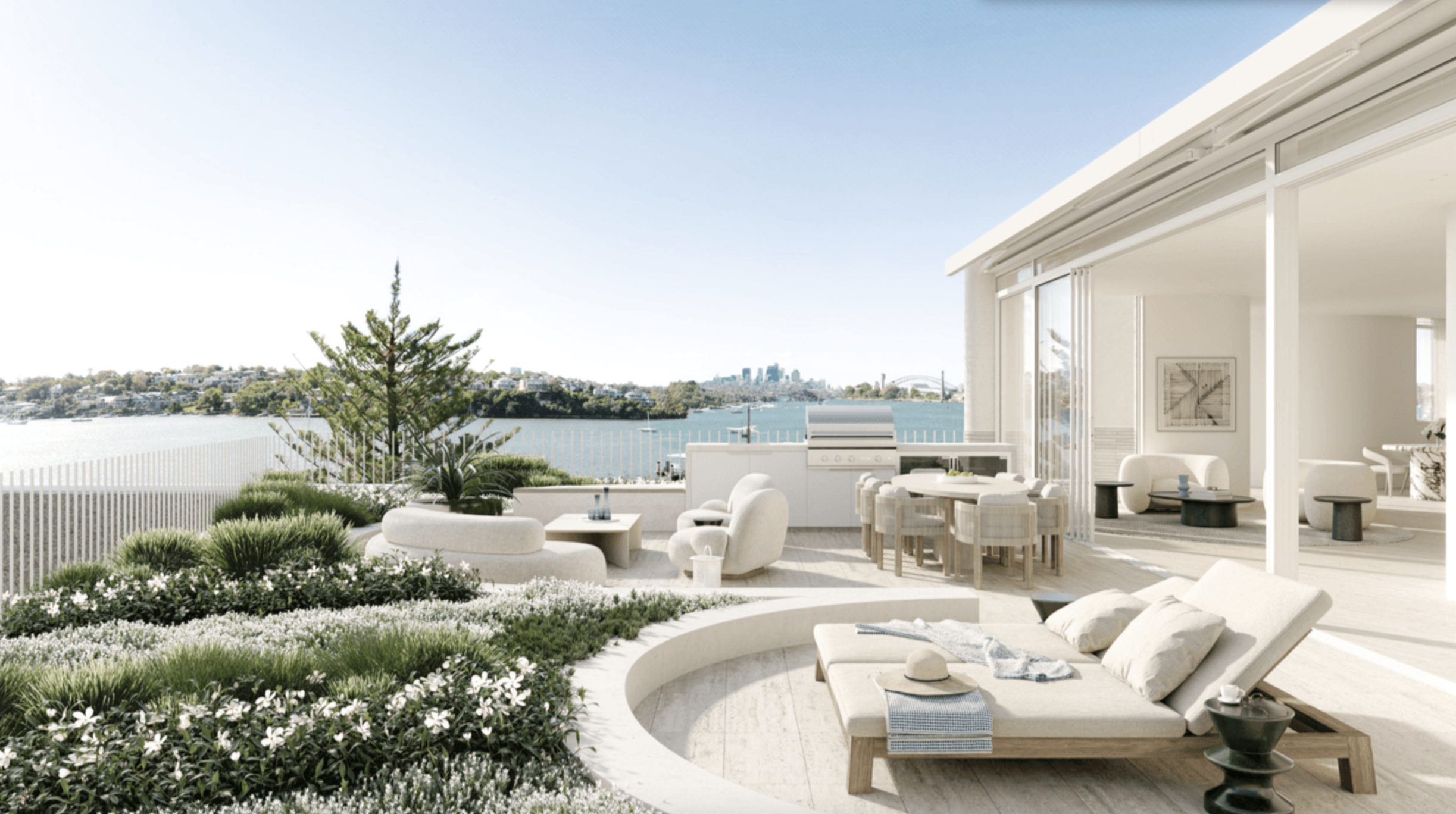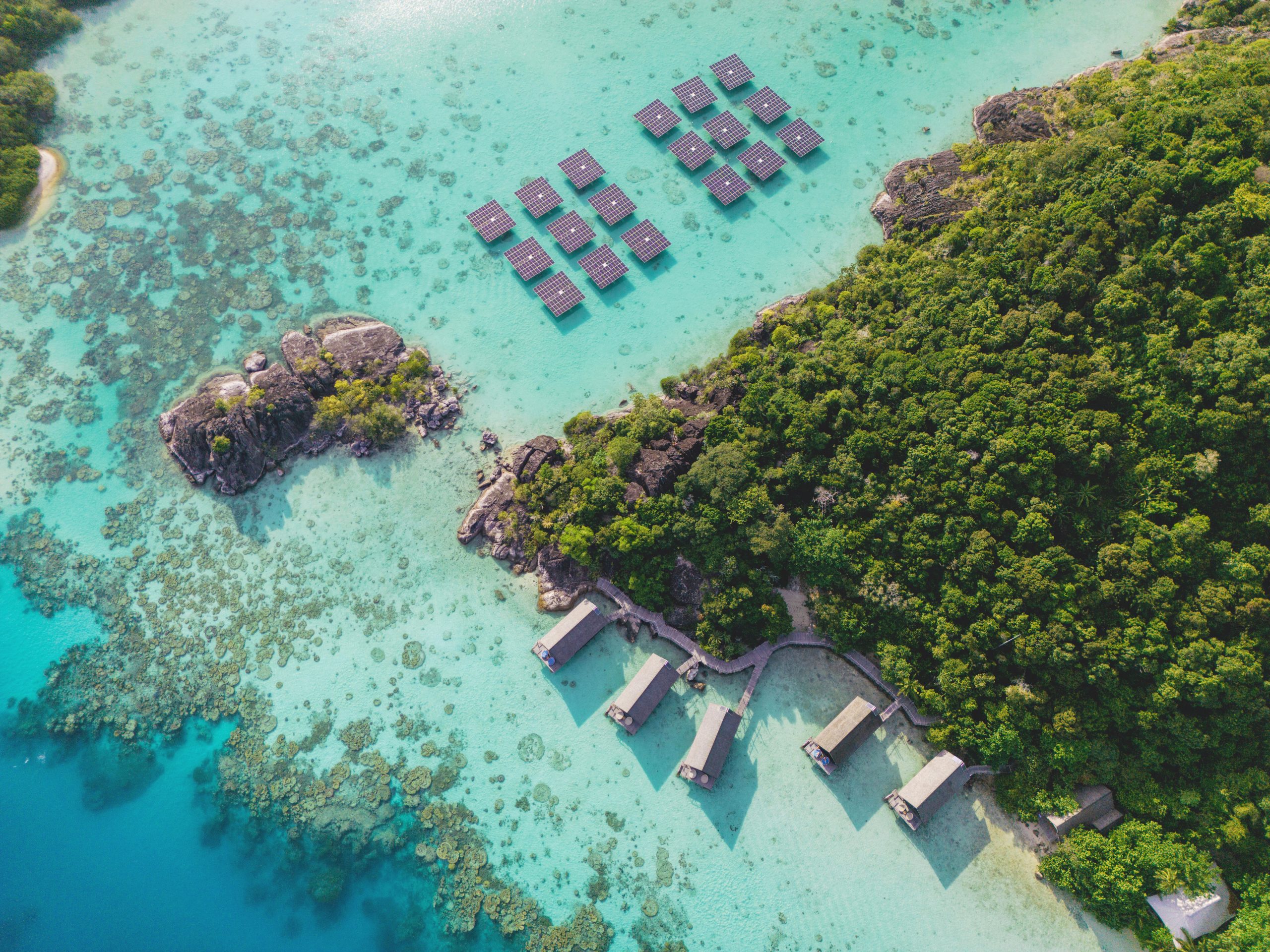Sydney’s five standout penthouses for 2025
Sydney’s most jaw-dropping penthouses are hitting the market in 2025, combining world-class design, elite amenities and views worth every cent.
Sydney’s top end of town is experiencing a wave of new luxury penthouses, and there’s no shortage of buyers willing to pay top dollar for them.
The must-haves? Unobstructed views, preferably of the Harbour; multiple levels with several living areas; enough bedrooms to accommodate the Brady Bunch; and cutting-edge technology that seamlessly integrates into everyday living.
Fresh off the heels of the near $80 million sale of the three-level penthouse atop the Crown Towers building in Barangaroo, we’ve curated a list of the five best new penthouses currently on the market across Sydney.
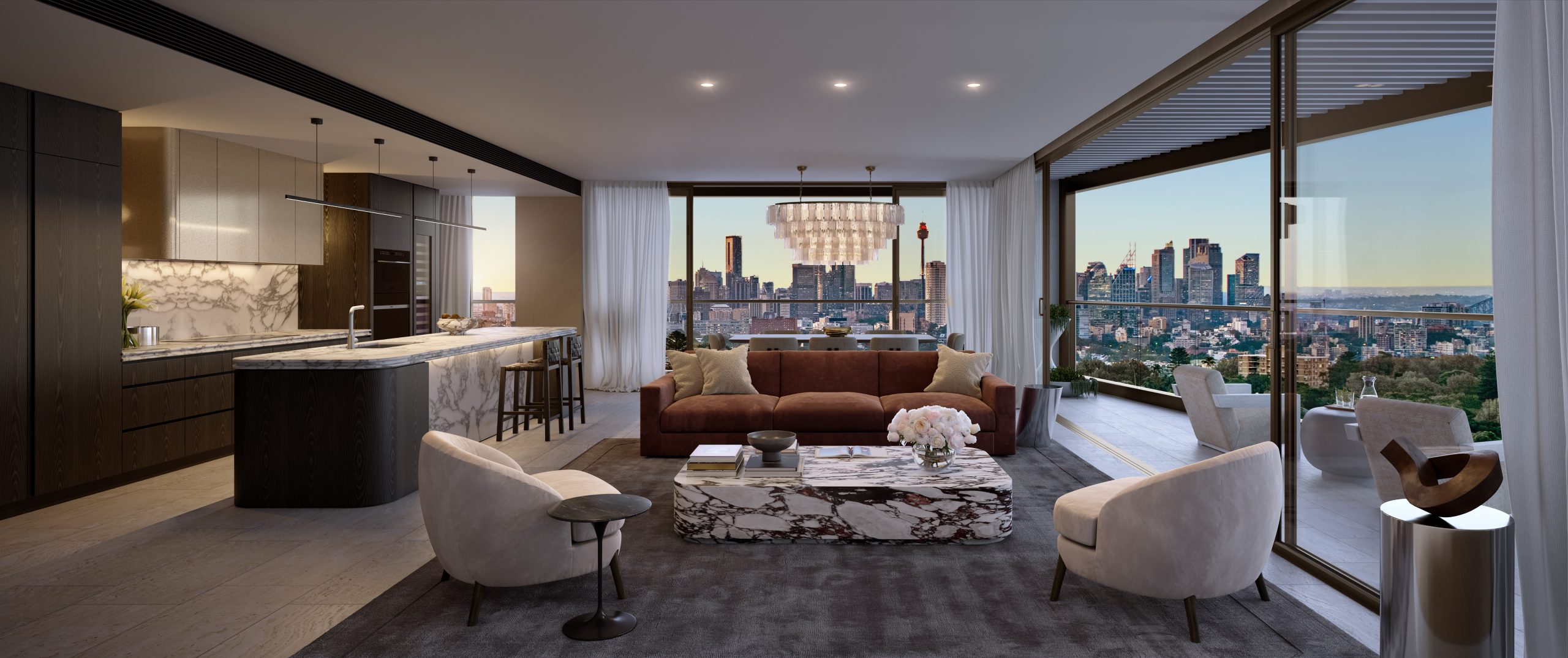
Origami, Bondi Junction
Origami is the highest-end new development in Bondi Junction, featuring a range of penthouses to match.
The 19-level tower, developed by JQZ, has been designed by legendary Japanese architect Koichi Takada, renowned for his award-winning, cutting-edge designs that have shaped the skylines of Sydney and the Gold Coast.
The 88 apartments have been split into three separate residences: Podium, Tower, and Signature, ranging from $1.5m one-beds (without parking) to the two 320 sqm-plus penthouses.
The penthouses boast premium finishes including imported marble (Arabescato and Travertine), bespoke joinery, ultra-premium Wolf and Sub-Zero appliances, wine cellars, and the best views of the city and Harbour.
Internationally renowned interior designer David Hicks, known for his work on ultra-high-end residences globally, has crafted opulent living spaces with signature details, including custom marble benchtop edging, atmospheric lighting, and sumptuous bathrooms described as “sanctuary within a sea of spa-like space.”
“I wanted to create the same standard of sophistication and lavishness that people have come to expect from the houses I have worked on,” said Hicks.
Residents will enjoy luxury amenities, including a heated rooftop pool with panoramic views, BBQ facilities, a wellness room, a gym, and a 24-hour hotel-style concierge service.
1st City agents Brad Caldwell-Eyles and Yaron Foghel are marketing Origami.
Sirius, The Rocks
The penthouse atop the Sirius building offers views that are never to be repeated. Sirius, a redevelopment of the brutalist social housing block designed by legendary architect Harry Seidler in 1979, is the closest building to the Sydney Harbour Bridge, facing north and offering gun-barrel, never-to-be-built-out views of the Sydney Opera House.
The penthouse spans over 430 sqm of internal space, featuring an open-plan living and dining area that flows seamlessly to a 40 sqm outdoor entertaining terrace with sweeping views and a private plunge pool.
Its custom-made kitchen features hand-selected joinery, marble, and high-end Wolf and Sub-Zero appliances. There are four bedrooms, each with an ensuite, one of which is part of the master wing, complete with its own lounge room, study, opulent bathroom with a steam shower, and an extensive custom walk-in wardrobe.
The building offers a 24/7 concierge service, a gym, a heated swimming pool and sauna, as well as a lounge and meeting room.
The penthouse has a guide price between $45m and $50m, listed with Steven Chen of The Agency and Colliers Director Luke Hayes.
The Cove, The Rocks
Staying in The Rocks, and in another landmark building by Harry Seidler. The SkyHouse, the penthouse atop the 2003-built Harrington Street tower, has been listed for $30 million.
Reportedly eyed by Nicole Kidman and Aussie John Symond when it was for sale in 2018, the three-level apartment spans around 687 sqm and features one of the most unique attributes of a penthouse not just on this list, but in the country: a super-yacht-inspired rooftop spa terrace, complete with a sunken spa and views of the Opera House and Harbour Bridge.
The five-bedroom, seven-bathroom penthouse features a private spa retreat with a Jacuzzi and massage table, a gym, a butler’s pantry and a separate bar in the kitchen, and a self-contained guest wing.
Levy Property Group Double Bay agents Nathan Antunes and Chana Levy have the listing.
West Village, Sydney
The most recent penthouse listing is one of the best on the list—a three-level, glass-encased apartment in the heart of the CBD. Crowning a Kent Street building designed by Angelo Candalepas, the expansive apartment spans 412 sqm of internal and external space and has been pitched as a ‘home in the sky.’
The heart of the penthouse is its expansive sculptural kitchen, featuring natural stone and timber joinery, paired with premium appliances, including a wine climate cabinet. The main living and dining areas flow onto a landscaped private terrace, offering views over the city and Darling Harbour. A private lift or staircase connects each of the three levels.
The second floor houses three of the four bedrooms, while the top level is dedicated solely to the master suite, complete with a bedroom, lounge area, walk-in wardrobe, and a stone-finished bathroom, as well as a private rooftop terrace surrounded by lush greenery.
Laver Residential Projects is marketing West Village, which has a total of eight apartments. The development is scheduled to be completed by 2027.
Bianca, Drummoyne
Not all penthouses are in the sky. Some penthouse buyers prefer to be on the top level of a smaller block, more interested in having neighbours and a community rather than sweeping views.
That being said, the penthouse atop Bianca Drummoyne, the new boutique harbourfront development by Central Element, boasts uninterrupted views of the water and down the harbour to the Harbour Bridge.
The 410 sqm penthouse, designed by Adam Haddow of SJB Architects, occupies the entire top level of the five-storey building, which features just 12 apartments. It features direct lift access that opens directly to the views. There are three lounge areas, an extended island bench, and the pièce de résistance: the terrace with a built-in outdoor kitchen, alfresco dining, and lounge area, all with private views over the water.
The penthouse is listed with a $15.5 million asking price.
Records keep falling in 2025 as harbourfront, beachfront and blue-chip estates crowd the top of the market.
A divide has opened in the tech job market between those with artificial-intelligence skills and everyone else.
The 2026 McGrath Report warns that without urgent reforms to planning, infrastructure and construction, housing affordability will continue to slip beyond reach for most Australians.
Australia’s housing market has reached a critical juncture, with home ownership and rental affordability deteriorating to their worst levels in decades, according to the McGrath Report 2026.
The annual analysis from real estate entrepreneur John McGrath paints a sobering picture of a nation where even the “lucky country” has run out of luck — or at least, out of homes.
New borrowers are now spending half their household income servicing loans, while renters are devoting one-third of their earnings to rent.
The time needed to save a 20 per cent deposit has stretched beyond ten years, and the home price-to-income ratio has climbed to eight times. “These aren’t just statistics,” McGrath writes. “They represent real people and real pain.”
McGrath argues that the root cause of Australia’s housing crisis is not a shortage of land, but a shortage of accessibility and deliverable stock.
“Over half our population has squeezed into just three cities, creating price pressure and rising density in Sydney, Melbourne and Brisbane while vast developable land sits disconnected from essential infrastructure,” he says.
The report identifies three faltering pillars — supply, affordability and construction viability — as the drivers of instability in the current market.
Developers across the country, McGrath notes, are “unable to make the numbers work” due to labour shortages and soaring construction costs.
In many trades, shortages have doubled or tripled, and build costs have surged by more than 30 per cent, stalling thousands of projects.
Need for systemic reform
McGrath’s prescription is clear: the only real solution lies in increasing supply through systemic reform. “We need to streamline development processes, reduce approval timeframes and provide better infrastructure to free up the options and provide more choice for everyone on where they live,” he says.
The 2026 edition of the report also points to promising trends in policy and innovation. Across several states, governments are prioritising higher-density development near transport hubs and repurposing government-owned land with existing infrastructure.
Build-to-rent models are expanding, and planning reforms are gaining traction. McGrath notes that while these steps are encouraging, they must be accelerated and supported by new construction methods if Australia is to meet demand.
One of the report’s key opportunities lies in prefabrication and modular design. “Prefabricated homes can be completed in 10–12 weeks compared to 18 months for a traditional house, saving time and money for everyone involved,” McGrath says.
The report suggests that modular and 3D-printed housing could play a significant role in addressing shortages while setting a new global benchmark for speed, cost and quality in residential construction.
Intelligent homes
In a section titled Weathering the Future: The Power of Smart Design, the report emphasises that sustainable and intelligent home design is no longer aspirational but essential.
It highlights new technologies that reduce energy use, improve thermal efficiency, and make homes more resilient to climate risks.
“There’s no reason why Australia shouldn’t be a world leader in innovative design and construction — and many reasons why we should be,” McGrath writes.
Despite the challenges, the tone of the 2026 McGrath Report is one of cautious optimism. Demand is expected to stabilise at around 175,000 households per year from 2026, and construction cost growth is finally slowing. Governments are also showing a greater willingness to reform outdated planning frameworks.
McGrath concludes that the path forward requires bold decisions and collaboration between all levels of government and industry.
“Australia has the land, demand and capability,” he says. “What we need now is the will to implement supply-focused solutions that address root causes rather than symptoms.”
“Only then,” he adds, “can we turn the dream of home ownership back into something more than a dream.”
In the remote waters of Indonesia’s Anambas Islands, Bawah Reserve is redefining what it means to blend barefoot luxury with environmental stewardship.
By improving sluggish performance or replacing a broken screen, you can make your old iPhone feel new agai









